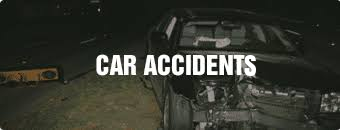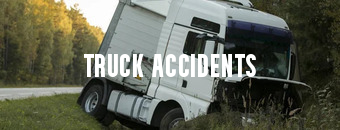- Our Firm
- Personal Injury
-
-
-
Personal Injury Lawyers
-
-
-
-
-
-
Injured in an accident? At Diamond & Diamond, our team of lawyers rely on their reputation in the field and extensive experience in personal injury to provide clients with a dedicated support system over the duration of their case.
-
-
-
-
-
HAVE YOU RECENTLY BEEN INJURED IN AN ACCIDENT?
-
-
-
- Corporate
- Class Action

Must-Have Boat Safety Equipment in Ontario
The prospect of going on a recreational boat on the many bodies of water in Ontario is enticing. Boating is a popular activity in many parts of Canada. In fact, about 12.4 million adults go boating for pleasure every year.
However, as a boat operator or owner, you must have boat safety equipment in good condition when going out into the water, especially during the busy summer months. The top cause of death in boating accidents is drowning due to the lack of lifejackets or wearable personal flotation devices, which are essential tools for boating safety.
Importance of Having Boat Safety Equipment
Transport Canada has dedicated an entire section on boat safety equipment requirements for different vessels, which all owners and operators must follow. Various authorities, including the Royal Canadian Mounted Police, can enforce laws and regulations, such as those that concern boat safety.
In Ontario, boat owners and operators can also avoid civil liability by keeping boat safety equipment, as specified in the regulations, on board. They owe people on their property a duty of care under the Occupiers’ Liability Act, including boats. Boat owners and operators can easily avoid this by having the proper boat safety equipment onboard.
Boat Safety Equipment You Must Have in Your Boat
Before you set off for the deep blue waters in anticipation of a good time with family and friends, check your boat safety equipment. The requirements vary based on the size of the vessel, but for boats 6 meters in length or smaller, the following boating safety equipment requirements are mandatory:
Wearable Personal Flotation Devices
You must have one personal floatation device (PFD), or life jacket, which is approved by Canadian authorities, for each person on the boat. Life jackets come in child and adult sizes, so you must ensure you have enough of the right-sized life jackets to accommodate all your passengers. Even alone, you must have at least two PFDs onboard. All life jackets must be inherently buoyant.
While the regulations do not require wearing life jackets, you should do so even if you are a good swimmer. Wearing a life jacket the entire time you are on a boat can literally save your life if you fall overboard.
The boat should have a buoyant heaving line at least 15 meters long to rescue anyone who falls overboard. If your boat exceeds 6 meters in length, you should also have at least one life buoy attached to the heaving line. Sailing vessels exceeding 24 meters in length must have two SOLAS life buoys: one attached to a buoyant line (minimum 30 meters in length) and the other to a self-igniting light.

You should also have a reboarding device, such as a transom ladder or lifting harness, if the freeboard distance, which is the height from the water you must climb to board the boat, is more than 0.5 meters. Lifting harnesses for longer, taller vessels must have appropriate rigging.
Fire Extinguishers
If your boat is a personal watercraft (PWC) or sail and powerboat, you will need at least one Class 5BC fire extinguisher. For fuel-powered vessels over 9 meters, you will need at least one Class 10BC fire extinguisher. You aren’t required to keep a fire extinguisher if your boat does not have an engine, a fixed fuel tank, or refrigerating, cooking or heating appliances. However, the Canadian Red Cross recommends having one anyway.
Navigation Equipment
If you have plans on taking your boat out before dawn, after sunset, or in conditions of inadequate visibility, such as fog or rain, ensure that it has working navigation lights. You should also have a waterproof flashlight with sufficient power for the size of your boat so that you can use it to illuminate your path back to shore if your navigation lights fail. This is an important part of your boating safety equipment.
Regulations also require your boat to have a magnetic compass and a radar reflector so that you will show up more quickly on the radars of other ships.
Adequate lights, compasses and radar reflectors will not only minimize the chances of getting lost or running aground, but they can also prevent collisions with other vessels. The goal is to make Personal Flotation Devices unnecessary.
Drunk driving is one of the top causes of boating accidents. Drinking slows your reaction time, thus making you dizzy and less equipped to deal with potential dangers.

Did you know?
Suppose you or a family member has been a victim in a boating accident. In that case, you must protect your rights by consulting with an experienced boating accident lawyer immediately. Call Diamond and Diamond today!
Distress Signals
If you do get lost, run aground, or need help for any reason, you can use your flashlight to signal other boats, the Coast Guard, or people on the shore. However, flares are more noticeable and recognized visual distress signals and, therefore, more effective.
Have You Been In a Boating Accident? Call The Personal Injury Lawyers at Diamond and Diamond Today.
The idea behind these required boating safety equipment is to hold boat owners and operators to a reasonable standard of care. You can avoid most boat accidents by simply putting these safety measures in place.
Unfortunately, many people do not, and it can lead to catastrophic injuries to all those involved in a boating accident. If you got hurt because the boat owner or operator was negligent, you might be able to get compensation.
However, boating accidents are typically complex and, depending on the circumstances, several laws may apply for boating injuries in Ontario, including the Marine Liability Act and the Occupiers’ Liability Act. To ensure you don’t run into trouble, consult with Diamond & Diamond Lawyers today!
Our boating accident lawyers have extensive experience dealing with complicated cases and deep knowledge of Canadian tort law. We are Canada’s top personal injury law firm with multiple offices in Ontario, Alberta and British Columbia. Whatever negligent accident you suffered, we will be there for you.
Don’t hesitate to ask for help. You can contact us 24/7 by calling us toll-free at 1-800-567-HURT or by filling out our online form. Go ahead and schedule a free case evaluation.
Need a Lawyer?
We are here 24/7 to address your case. You can speak with a lawyer to request a consultation.
1-800-567-HURTGet started with a free consultation
OUR TEAM
- Ishmeet Sandhu
- Nolan Bachmann
- Annamarie Demaj
- Jeffrey Hum
- Tofunmi Adeyeye
- Alessia De Gasperis
- Amandeep Chawla
- Jeremy Tsoi
- Kimiya Razin
- Shir Zisckind
- Gray Sinden
- Shelly Bard
- Christian Brown
- Daly Canie
- Tanveer Sohal
- Prianka Virdi
- Noah Brownstone
- Justin Kaminker
- Harinder S. Bhatti
- Craig Yargeau
- Kiran Birk
- Amit Singh
- Andrei Teju
- Maria Zahid
- Matthew Douglas
- Jacob Elyk
- Harry Gill
- Kristina Olivo
- Egi Bano
- Cam Woolley
- Charles Thompson
- Alexandra McCallum
- John Sime
- Allan Cocunato
- Patrick Poupore
- Erika Henderson
- Marina Korshunova
- Brandon Handelman
- Regeena Alapat
- Ryna Kim
- Natalia Poliakova
- Isaac Zisckind
- Manpreet Bhogal
- Mathura Santhirasegaram
- Nikolai Singh
- Sandra Zisckind
- Jeremy Diamond
- Michael Blois
- Darryl Singer
- Nadia Condotta
- Tinashe Madzingo
- Megan Armstrong
- Veronica D’Angelo
- Corey J. Sax
- Scott Tottle
- Steven Wilder
- TJ Gogna
- Jillian Carrington
- Joshua Himel
- Simon Diamond
- Cory Rubin
- Simon Mariani
- Brandon Greenwood
- Basil Bansal
- Nastassia Ivanova
- Tania Fleming
- George Laloshi
- Patrycja Majchrowicz
- Diana Iakossavas
- Dior Africa
- Alex Ragozzino
- Liana Saccucci
- Richard J. Chang
FAQs on Must-Have Boat Safety Equipment for Your Boat
What are the top boating accident causes?
Most boating accidents leading to injuries or death are due to the following:
- Failure to have a personal flotation device (PFD) or lifejacket
- Collisions due to speeding or operating the vessel while distracted
- Falling overboard
- Capsizing or running aground
- Operating a boat while drunk or under the influence of drugs
Should I bring safety tools on a boat?
Yes, you should at least bring the required safety tools on a boat, such as PFDs. You might also want to add a first aid kit and a toolbox with spare fuses, batteries, bulbs and a fuel filter.
What is the proper anchoring procedure?
Anchoring a small boat using the appropriate anchor weight is not complicated. It involves the following steps:
- Find out the depth of the water.
- Make the anchor scope calculation (aim for a 7:1 ratio).
- Drop the anchor, letting out the proper length for the anchor scope.
- Secure the rope to a bow cleat, ensuring there is no drag. You might have to reset the anchor if there is drag.
- When retrieving the anchor, go towards it as you take the rope in. Never tie the anchor to the boat’s stern.
NEED A LAWYER? CONTACT OUR TEAM TODAY
Chat Now
OR CALL NOW FOR A FREE CONSULTATION
 1-888-INFO-LAW
1-888-INFO-LAW
Head Offices
Main Offices
Barrie
Main Office
168 Bayfield Street
Calgary
Main Office
1331 Macleod Trail SE, Suite 645
Edmonton
Head Office
4246 97 Street NW, Unit 103
Halifax
Consultation Office
1701 Hollis St
London
Main Office
256 Pall Mall St, Suite 102
Oshawa
Consultation Office
50 Richmond Street E, Unit # 108 B
Ottawa
Main Office
955 Green Valley Crescent, Unit 315
Sudbury
Main Office
31 Larch Street, Unit 300
Timmins
Main Office
120 Cedar Street South, Unit 002A
Toronto
Head Office
255 Consumers Road, 5th Floor
Vancouver
Head Office
1727 West Broadway, Suite 400
Windsor
Main Office
13158 Tecumseh Rd. E. Unit 3B
Additional Areas Served
Ontario
- Ajax
- Alberta
- Aurora
- Barrie
- Belleville
- Bowmanville
- Brampton
- Brantford
- Brockville
- Bracebridge
- Bradford
- Burlington
- Burnaby
- Calgary
- Chatham
- Cobourg
- Collingwood
- Cornwall
- Durham
- Edmonton
- Elliot Lake
- Etobicoke
- Georgetown
- Guelph
- Hamilton
- Huntsville
- Kanata
- Kelowna
- Kingston
- Kitchener
- Leamington
- London
- Markham
- Milton
- Mississauga
- Muskoka
- Niagara Falls
- Newcastle
- Newmarket
- North Bay
- North York
- Oakville
- Orangeville
- Orillia
- Oshawa
- Ottawa
- Owen Sound
- Parry Sound
- Perth
- Peterborough
- Pickering
- Prince Edward County
- Richmond
- Richmond Hill
- Sault Ste Marie
- Sarnia
- Scarborough
- St. Catharines
- St. Thomas
- Stouffville
- Sudbury
- Surrey
- Thunder Bay
- Timmins
- Toronto
- Uxbridge
- Vancouver
- Wallaceburg
- Waterloo
- Welland
- Whitby
- Windsor
- Woodstock













